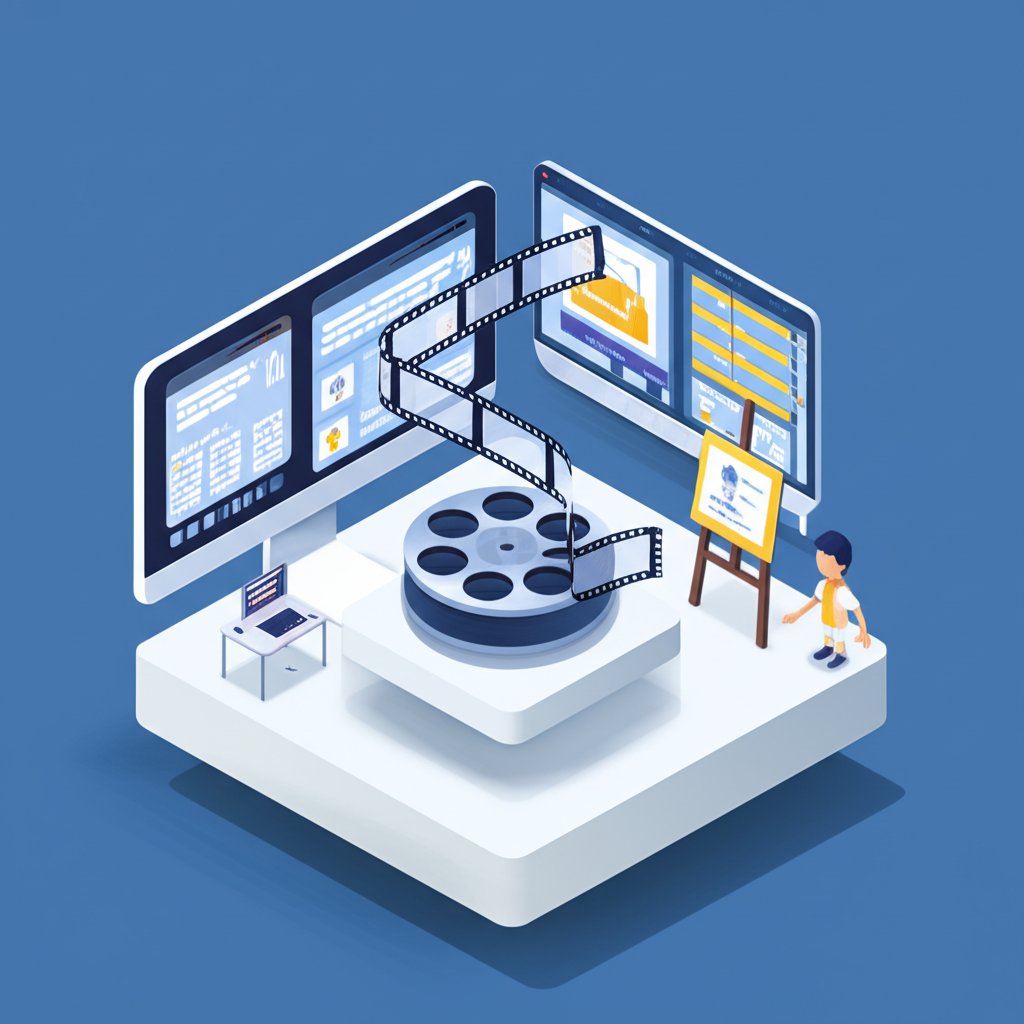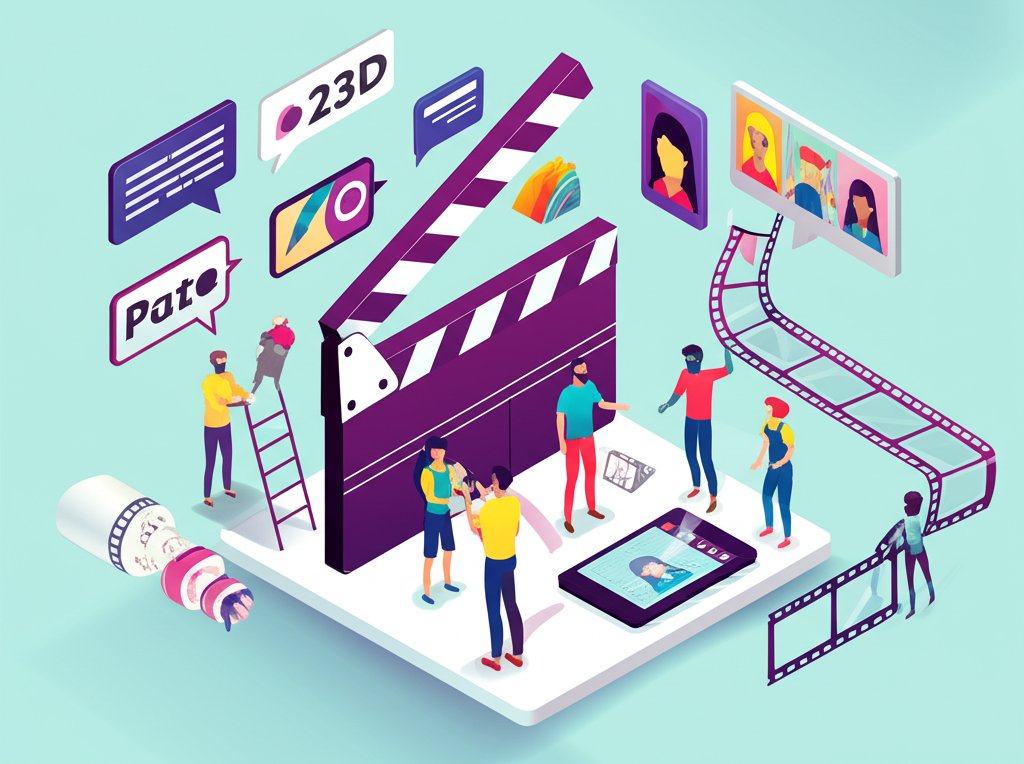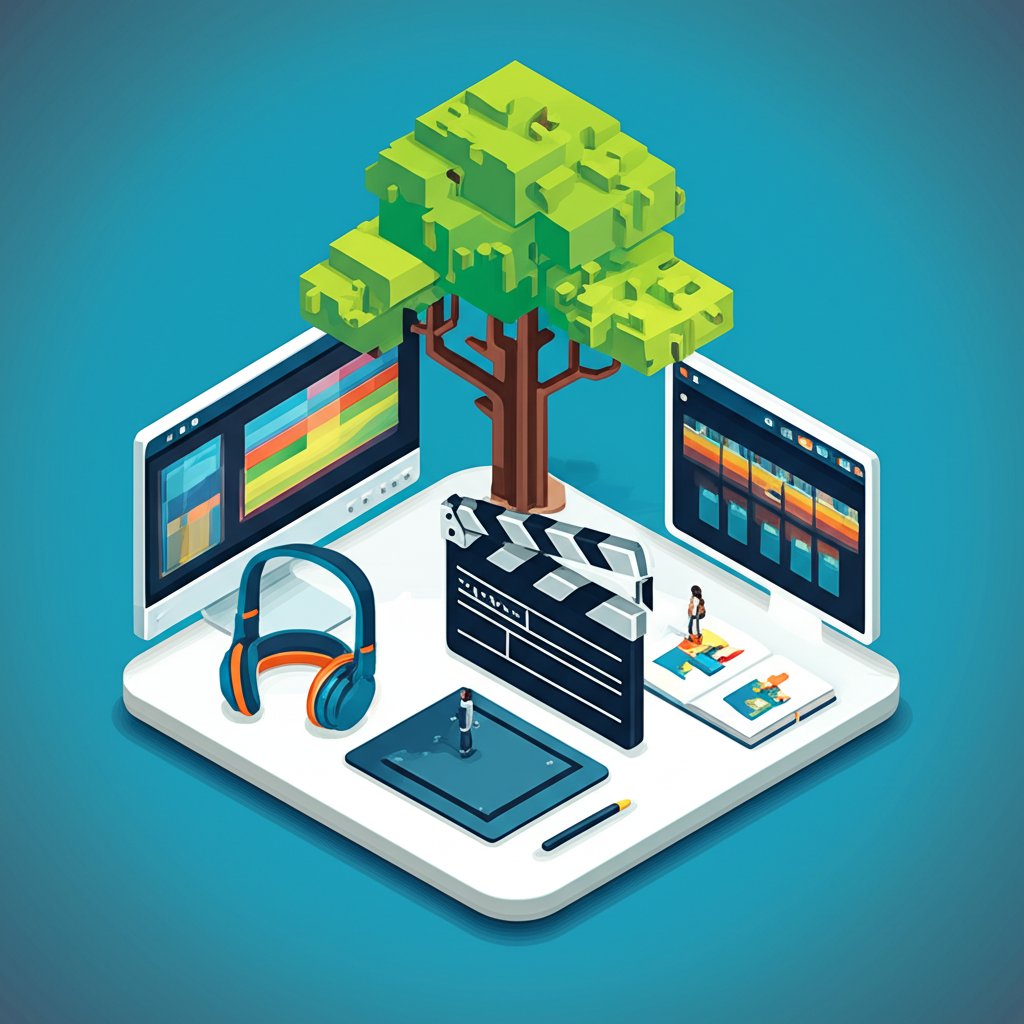Are you captivated by the magic of moving images, the power of storytelling through visuals, and the endless possibilities of digital artistry? If the thought of bringing fantastical worlds and compelling characters to life excites you, then a career in animation might be your true calling. The animation industry is a vibrant, ever-evolving landscape that blends artistic talent with cutting-edge technology. But what does it really take to thrive in this captivating field?
In this definitive guide, we’ll cut through the noise to deliver the essential animation career facts and expert industry secrets you need to know. From the diverse roles that shape animated masterpieces to the practical steps for breaking into the field, and a peek into the future, prepare to unlock a wealth of insights that will position you for success and help you dominate your animation career journey.
The Allure of an Animation Career: Why Choose This Path?

Choosing a career in animation is often driven by a deep-seated passion for visual storytelling and creative expression. It’s a field where imagination literally takes shape, offering unique rewards for those dedicated to the craft.
Tapping into Creativity and Storytelling
At its core, animation is about bringing narratives to life. Whether it’s a whimsical children’s show, an epic fantasy movie, or an immersive video game, animators are the architects of visual worlds. This path offers unparalleled opportunities to:
- Express Artistic Vision: Transform abstract ideas and emotions into tangible, moving art.
- Craft Compelling Characters: Develop personalities, movements, and expressions that resonate with audiences.
- Influence Culture: Contribute to stories that entertain, educate, and inspire millions globally.
A Dynamic and Evolving Industry
The animation industry is far from static. It’s a hotbed of innovation, constantly pushing the boundaries of technology and artistic technique. This dynamism means:
- Continuous Learning: Animators are lifelong learners, adapting to new software, tools, and artistic styles.
- Varied Projects: Work on everything from traditional 2D animation to advanced 3D CGI, stop-motion, motion graphics, and even virtual reality experiences.
- Global Collaboration: The industry often involves international teams, fostering diverse creative perspectives.
Impacting Audiences Worldwide
From the earliest hand-drawn sketches to today’s photorealistic digital worlds, animation consistently crosses cultural and linguistic barriers. An animation career allows you to be part of a legacy that connects with people of all ages, eliciting laughter, tears, and wonder across the globe.
Decoding the Animation Industry: Roles, Realities, and Growth
The animation industry is a complex ecosystem made up of hundreds of specialized roles, each contributing to the final animated product. Understanding these roles and the industry’s operational realities is crucial for any aspiring professional.
The Diverse Landscape of Animation Jobs
When people think of animation careers, they often picture a single animator drawing characters. In reality, the production pipeline is segmented into many distinct, highly skilled positions. Here are some of the most common roles within the animation industry:
- Character Animator: Specializes in bringing characters to life through movement, conveying emotion and personality. This is often what people envision when they think of animators.
- Concept Artist: Designs the initial look and feel of characters, environments, and props, setting the visual tone for a project.
- Storyboard Artist: Translates scripts into visual sequences, sketching out shots and scene compositions that guide the animation process.
- 3D Modeler: Creates the three-dimensional structures of characters, props, and environments using specialized software.
- Rigging Artist: Builds the “skeleton” and controls for 3D models, allowing animators to manipulate characters realistically.
- Texture Artist: Paints and applies surface details, colors, and materials to 3D models to give them realistic or stylized appearances.
- Lighting Artist: Sets up the lighting for scenes to create mood, depth, and visual appeal, enhancing the storytelling.
- Visual Effects (VFX) Artist: Creates special effects like explosions, fluid simulations, magic, and environmental phenomena.
- Motion Graphics Designer: Focuses on animating text, logos, and abstract shapes, often used in commercials, titles, and user interfaces.
- Layout Artist: Plans the camera angles, staging, and blocking of characters within a scene.
- Background Artist (2D): Creates the static environments and backdrops for animated scenes.
- Production Coordinator/Manager: Oversees the project timeline, budget, and team workflow, ensuring deadlines are met.
Each of these animation careers requires a unique blend of artistic talent, technical proficiency, and collaborative spirit.
Industry Growth and Market Trends
The global animation industry is experiencing unprecedented growth, driven by several key factors:
- Streaming Services Boom: Platforms like Netflix, Disney+, Hulu, and Amazon Prime Video constantly demand new, high-quality animated series and films, creating a vast market for content creators.
- Gaming Dominance: The video game industry heavily relies on animation for character movement, cutscenes, and environmental effects, offering a robust job market for animators.
- Emergence of VR/AR: Virtual and Augmented Reality platforms are opening new frontiers for immersive animated experiences, requiring innovative talent.
- Global Demand: Animation transcends language barriers, making it an internationally marketable product, with studios and projects spanning continents.
- Advertising and Marketing: Animated commercials, explainer videos, and branding content remain powerful tools for businesses, sustaining a steady demand for motion graphics designers and animators.
Industry reports suggest that the global animation market is projected to continue its upward trajectory, making it a promising field for long-term career stability and growth.
The Realities of the Animator’s Workday
While an animation career is incredibly rewarding, it’s essential to understand the practical realities of the job. It’s often not a 9-to-5 desk job, especially during crunch times.
- Overtime and Deadlines: The intricate, time-consuming nature of animation projects frequently demands extended hours to meet tight deadlines. This can include working evenings and weekends, particularly as a project nears completion.
- Balancing Creativity and Efficiency: Animators must strike a delicate balance between artistic perfection and project timelines. While creativity is paramount, the ability to work efficiently and deliver on schedule is equally valued.
- Repetitive Tasks: Certain aspects of animation can involve repetitive tasks, especially in larger studio pipelines where specialization is high. Animators might work on a single character’s walk cycle or a specific environmental effect for days or weeks.
- Evolving Software and Techniques: The tools of the trade are constantly updated. Animators must dedicate time to learning new software versions, plugins, and techniques to remain competitive.
- Collaborative Environment: Animation is rarely a solo endeavor. Successful animators thrive in team settings, communicating effectively with directors, producers, other artists, and technical staff.
“Working in the animation industry is a marathon, not a sprint,” advises an industry veteran. “It requires dedication, resilience, and a love for the craft, especially when you’re pushing through late nights to hit that perfect frame.”
Charting Your Career in Animation: Education, Skills, and Portfolio
Embarking on a career in animation requires a strategic approach. It’s not just about talent; it’s about developing a comprehensive skill set, building a compelling portfolio, and effectively navigating the job market.
Essential Skills for Aspiring Animators
Beyond raw artistic talent, a successful animation career hinges on a diverse set of skills:
- Artistic Fundamentals: A strong understanding of drawing, anatomy, perspective, color theory, and composition is foundational, even for 3D animators.
- Animation Principles: Mastery of the “12 Principles of Animation” (squash and stretch, anticipation, staging, follow-through, etc.) is non-negotiable for creating believable movement.
- Software Proficiency: Expertise in industry-standard software like Autodesk Maya, Blender, Adobe Animate (formerly Flash), Toon Boom Harmony, ZBrush, Substance Painter, and Adobe After Effects is critical.
- Storytelling: The ability to convey narrative through visual sequences, character performance, and scene staging.
- Observation Skills: A keen eye for how things move in the real world – people, animals, objects – is vital for creating believable animation.
- Problem-Solving: Animators frequently encounter technical or creative challenges that require innovative solutions.
- Attention to Detail: Even the smallest details can dramatically impact the quality of an animation.
- Communication and Collaboration: The animation pipeline is highly collaborative. Being able to give and receive feedback constructively is essential.
- Time Management: As highlighted, meeting deadlines while maintaining quality is a constant challenge.
Educational Pathways: Degrees, Certificates, and Self-Taught Success
While a formal education can provide a structured learning environment, there are multiple routes to a career in animation:
- Bachelor’s or Master’s Degree: Many universities and art colleges offer degrees in Animation, Digital Media, or Game Art. These programs provide comprehensive training in artistic fundamentals, software, and industry practices, along with networking opportunities.
- Pros: Structured curriculum, industry connections, access to high-end equipment, comprehensive theoretical and practical knowledge.
- Cons: Can be expensive, may not always keep pace with rapidly evolving software.
- Specialized Certificates or Diplomas: Shorter, more focused programs at animation schools or vocational institutes can provide intensive training in specific areas of animation.
- Pros: Faster entry into the workforce, often taught by active industry professionals, more affordable than a full degree.
- Cons: Less breadth in academic subjects, may require prior artistic foundation.
- Online Courses and Bootcamps: Platforms like CG Spectrum (a competitor, but relevant here), Animation Mentor, School of Motion, and even free resources on YouTube offer flexible, self-paced learning.
- Pros: Affordable, highly flexible, often taught by top industry talent, focused on practical skills.
- Cons: Requires strong self-discipline, less hands-on mentorship, no formal degree.
- Self-Taught Artists: Some highly successful animators are self-taught, learning through tutorials, practice, and persistent experimentation.
- Pros: No tuition costs, complete freedom to explore.
- Cons: Very challenging, requires immense self-motivation, difficult to get structured feedback.
Regardless of the path chosen, continuous learning and dedicated practice are paramount. “Your portfolio speaks louder than any degree,” says a recruitment specialist. “What matters most is demonstrably strong work.”
Crafting a World-Class Animation Portfolio
Your portfolio is your calling card. It’s the single most important tool for landing an animation career job.
- Showcase Your Best Work: Include only your strongest pieces. Quality over quantity.
- Specialize Your Reel: Tailor your demo reel to the specific role you’re applying for (e.g., character animation reel vs. motion graphics reel).
- Keep it Concise: Most recruiters spend only a few minutes reviewing a reel. Aim for 1-3 minutes of impactful work.
- Demonstrate Fundamentals: Show clear understanding of weight, timing, emotion, and storytelling.
- Include Process Work: Sometimes showing sketches, wireframes, or animatics can demonstrate your thought process.
- Regularly Update: Keep your portfolio fresh with new and improved work.
Networking and Landing Your First Job
- Attend Industry Events: Animation festivals, conferences, and online forums are great places to meet professionals and learn about opportunities.
- Online Presence: Maintain a professional online portfolio and be active on platforms like LinkedIn, ArtStation, and Behance.
- Internships: Many studios offer internships, which are invaluable for gaining experience and making connections.
- Freelancing: Taking on smaller freelance projects can build your portfolio and provide real-world experience.
Unveiling Key Animation Facts: History, Innovation, and Impact
To truly appreciate an animation career, it’s enlightening to understand the rich lineage of the art form itself. Animation has a fascinating history, full of pioneering minds and groundbreaking innovations.
A Brief History of Animation: From Zoetropes to CGI Blockbusters
The desire to depict motion in images is ancient, seen in prehistoric cave paintings. However, modern animation began with several key developments:
- Pre-Cinema Devices: Devices like the Phenakistiscope (1832), Zoetrope (1834), and Praxinoscope (1877) used sequential drawings to create the illusion of movement.
- Pioneering Animated Films:
- Fantasmagorie (1908): Often considered the first animated film, created by Émile Cohl, consisting of stick figures and morphing objects.
- Gertie the Dinosaur (1914): Winsor McCay’s groundbreaking work that established many animation principles.
- The Adventures of Prince Achmed (1926): By Lotte Reiniger, it’s the oldest surviving feature-length animated film, using silhouette animation.
- The Golden Age of Animation (1930s-1960s): Dominated by studios like Walt Disney (with Snow White and the Seven Dwarfs in 1937, the first American feature-length cel-animated film), Warner Bros., and MGM, which created iconic characters and developed many animation techniques.
- Rise of Television Animation (1960s onwards): Hanna-Barbera, Filmation, and others brought animation into homes globally with beloved cartoon series.
- Computer Animation (1970s-Present):
- Early experiments included Westworld (1973) using 2D computer animation sparingly.
- Toy Story (1995): Pixar’s monumental achievement, the first fully computer-animated feature film, revolutionized the industry and paved the way for modern CGI.
These animation facts highlight a journey of continuous innovation, driven by artists seeking new ways to tell stories.
Milestones and Groundbreaking Innovations
- Cel Animation: Invented by Earl Hurd and John Randolph Bray in 1914, this allowed animators to draw characters on clear sheets (cels) and lay them over static backgrounds, dramatically speeding up production.
- Multiplane Camera: Developed by Walt Disney Studios, this camera allowed for layers of artwork to be filmed at different distances from the camera, creating a sense of depth and realism.
- Rotoscoping: Invented by Max Fleischer, this technique involves tracing over live-action footage frame by frame to produce realistic movement.
- Motion Capture: Pioneered in the 1970s and refined significantly since, it records the movement of live actors and maps it onto digital characters, revolutionizing realistic digital performance.
- Procedural Animation and AI: Modern techniques that use algorithms and artificial intelligence to automate complex animation tasks or generate natural movements, though still in early stages for creative output.
The Global Reach of Animation
Beyond Hollywood, the animation industry is a global phenomenon.
- Anime (Japan): A distinct and hugely popular style, known for its diverse genres and sophisticated storytelling.
- European Animation: Countries like France have strong traditions in independent and arthouse animation, often pushing artistic boundaries.
- South Korean and Indian Animation: Major hubs for outsourcing and co-production, contributing significantly to global animated content.
- African Animation: Growing rapidly, bringing unique cultural narratives and styles to the international stage.
These global animation facts underscore the universal appeal and diverse cultural expressions found within the field.
Financial Outlook and Future of the Animation Industry

Understanding the financial aspects and future trajectory is another crucial set of animation career facts for anyone considering this path.
Animation Salaries: What to Expect
The average salary for animators can vary significantly based on experience, location, specialization, and company size.
- Entry-Level: An entry-level animator in the United States might start in the range of $40,000 – $55,000 per year.
- Mid-Level: With 3-7 years of experience, salaries can climb to $60,000 – $90,000 annually.
- Senior/Lead Animator: Highly experienced animators or those in lead roles can command salaries well over $100,000, sometimes reaching $150,000+ in major studios or high-cost-of-living areas.
- Freelance Rates: Freelancers set their own rates, which can range from $25-$100+ per hour, depending on their skill, reputation, and project complexity.
Salaries are generally higher in major animation hubs like Los Angeles, San Francisco, Vancouver, and London, but the cost of living in these areas is also higher. Specialization also plays a role; highly sought-after technical animators or VFX artists may earn more than generalists.
The Impact of AI and Emerging Technologies
The animation industry, like many creative fields, is at the cusp of significant transformation due to Artificial Intelligence.
- Automation of Repetitive Tasks: AI can automate tasks like in-betweening, lip-syncing, and even basic character rigging, potentially freeing up animators for more creative work.
- Generative AI: Tools can now generate character designs, backgrounds, and even initial animation sequences, posing both opportunities and challenges.
- Real-time Animation: Advances in game engines and virtual production allow for animation to be created and rendered in real-time, speeding up production pipelines.
While AI presents challenges concerning job security for some roles, many experts believe it will act as a powerful tool to augment human creativity, not replace it entirely. Animators who can adapt to and master these new AI-driven tools will likely find themselves in high demand.
Niche Specializations and Future Opportunities
The future of animation careers lies in both adapting to new technologies and exploring underserved niches.
- Virtual Production: Combining real-time game engines with physical sets to create virtual environments that actors interact with.
- Interactive Storytelling: Developing animated content for video games, interactive narratives, and educational apps.
- Medical and Scientific Visualization: Using animation to explain complex biological processes or scientific concepts.
- Architectural Visualization: Creating animated walkthroughs and renderings of buildings and urban designs.
- Extended Reality (XR): Animating for VR, AR, and mixed reality applications offers immense growth potential.
- Independent Animation: With accessible tools, more animators are finding success creating and distributing their own content online.
“The best way to future-proof your animation career is to remain curious, adaptable, and continuously expand your skill set to embrace new technologies and creative avenues,” advises a leading animation educator.
Conclusion: Your Journey into the World of Animation
The world of animation is a thrilling blend of artistic passion, technical prowess, and relentless innovation. From understanding the diverse animation careers within the animation industry to mastering essential skills and adapting to future trends, a successful career in animation demands dedication and continuous learning.
We’ve explored the core animation career facts, from the creative allure and the realities of the animator’s workday to the historical milestones and the financial outlook. With the right education, a stellar portfolio, and a proactive approach to networking, you can navigate this dynamic field and bring your unique visions to life. Embrace the challenges, celebrate the creative successes, and prepare to contribute to a medium that truly moves the world.
Ready to start your animated journey? The industry awaits your talent, your stories, and your unique perspective.
FAQ
Q1: What are the primary types of animation and which career paths do they offer?
A1: The primary types include 2D (traditional/cel, digital), 3D (CGI), Stop-Motion, and Motion Graphics.
Each type offers distinct animation careers requiring specialized skills and software proficiency.
Q2: Is a formal degree essential for a career in animation?
A2: While a formal degree can provide structure, networking opportunities, and a strong foundation, it is not always strictly essential. Many successful animators have built their careers through self-study, online courses, specialized bootcamps, and a strong, constantly updated portfolio. Employers ultimately prioritize a compelling demo reel that showcases relevant skills and artistic ability over a specific degree.
Q3: How is the animation industry evolving with new technologies like AI?
A3: The animation industry is rapidly evolving with AI. AI tools are automating repetitive tasks like in-betweening, lip-sync, and even some character generation, potentially speeding up production pipelines. Generative AI is capable of creating initial designs and animation sequences. While this may shift the demand for certain entry-level roles, it also creates new opportunities for animators who can master and integrate these AI tools into their creative workflows, focusing more on high-level artistic direction and problem-solving.
Q4: What is the average salary for animators, and what factors influence it?
A4: The average salary for animators in the United States typically ranges from $40,000 for entry-level positions to over $100,000 for experienced senior or lead animators. Key factors influencing salary include:
Q5: What are some critical “animation facts” about the history of the medium?
A5: Some critical animation facts include:










